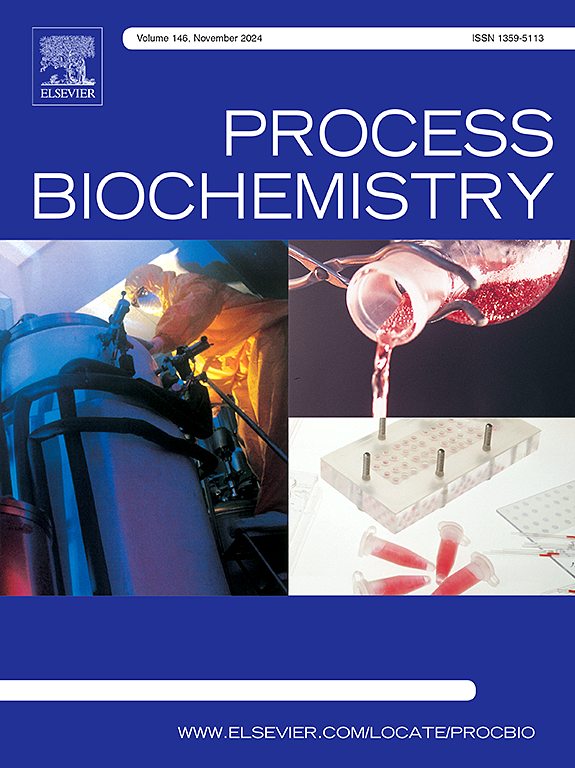An integrated study on the interactions of Lactobacillus brevis components with deoxynivalenol and zearalenone
IF 3.7
3区 生物学
Q2 BIOCHEMISTRY & MOLECULAR BIOLOGY
引用次数: 0
Abstract
Deoxynivalenol (DON) and zearalenone (ZEN) are toxic Fusarium mycotoxins that frequently contaminate food and feed, posing significant public health risks. Among mitigation strategies, biological methods using lactic acid bacteria (LAB; e.g., Lactobacillus spp.) show particular promise, as these microorganisms can effectively biodegrade mycotoxins into less toxic or inactive metabolites. This study explored the binding and biotransformation capabilities of Lactobacillus brevis components (S-layer, aryl-alcohol dehydrogenase, carboxylesterase, and lipoteichoic acid repeats) using computational docking and Fourier transform infrared (FTIR) spectroscopy. Docking simulations revealed stronger binding affinities for ZEN than DON, involving interactions with hydroxyl groups, oxygen atoms, alkyl chains, and aromatic rings. Enzymes formed stable complexes with mycotoxins, suggesting biotransformation potential. FTIR spectra after 24 hours of incubation revealed mycotoxin adsorption through interactions with bacterial cell wall components, indicated by C-H and C-C peak shifts. For DON, changes in OH and C![]() O peaks suggested oxidation-reduction, likely mediated by aryl-alcohol dehydrogenase, producing 3-keto-DON and 3-epi-DON. For ZEN, shifts in OH, C-O, and C
O peaks suggested oxidation-reduction, likely mediated by aryl-alcohol dehydrogenase, producing 3-keto-DON and 3-epi-DON. For ZEN, shifts in OH, C-O, and C![]() O peaks indicated lactone ring hydrolysis, likely catalyzed by carboxylesterase. These findings highlight L. brevis as a promising biocontrol agent that detoxifies DON and ZEN through binding and biotransformation, offering a potential strategy to mitigate mycotoxin contamination in food and feed.
O peaks indicated lactone ring hydrolysis, likely catalyzed by carboxylesterase. These findings highlight L. brevis as a promising biocontrol agent that detoxifies DON and ZEN through binding and biotransformation, offering a potential strategy to mitigate mycotoxin contamination in food and feed.
短乳杆菌成分与脱氧雪腐菌醇和玉米赤霉烯酮相互作用的综合研究
脱氧雪腐镰刀菌醇(DON)和玉米赤霉烯酮(ZEN)是有毒的镰刀菌毒素,经常污染食品和饲料,构成重大公共卫生风险。在缓解策略中,利用乳酸菌(LAB;例如,乳杆菌)显示出特别的希望,因为这些微生物可以有效地将真菌毒素生物降解为毒性较小或无活性的代谢物。本研究利用计算对接和傅里叶变换红外(FTIR)光谱技术,探讨了短乳杆菌组分(s层、芳基醇脱氢酶、羧酸酯酶和脂质胆酸重复序列)的结合和生物转化能力。对接模拟显示,ZEN的结合亲和力比DON强,包括与羟基、氧原子、烷基链和芳香环的相互作用。酶与真菌毒素形成稳定的复合物,表明具有生物转化潜力。孵育24 小时后的FTIR光谱显示霉菌毒素通过与细菌细胞壁组分的相互作用吸附,由C-H和C-C峰移表示。对于DON, OH和CO峰的变化表明氧化还原,可能是由芳基醇脱氢酶介导的,产生3-酮-DON和3-epi-DON。对于ZEN, OH, C-O和CO峰的变化表明内酯环水解,可能是由羧酸酯酶催化的。这些发现突出了短乳杆菌作为一种很有前景的生物防治剂,通过结合和生物转化来解毒DON和ZEN,为减轻食品和饲料中的霉菌毒素污染提供了潜在的策略。
本文章由计算机程序翻译,如有差异,请以英文原文为准。
求助全文
约1分钟内获得全文
求助全文
来源期刊

Process Biochemistry
生物-工程:化工
CiteScore
8.30
自引率
4.50%
发文量
374
审稿时长
53 days
期刊介绍:
Process Biochemistry is an application-orientated research journal devoted to reporting advances with originality and novelty, in the science and technology of the processes involving bioactive molecules and living organisms. These processes concern the production of useful metabolites or materials, or the removal of toxic compounds using tools and methods of current biology and engineering. Its main areas of interest include novel bioprocesses and enabling technologies (such as nanobiotechnology, tissue engineering, directed evolution, metabolic engineering, systems biology, and synthetic biology) applicable in food (nutraceutical), healthcare (medical, pharmaceutical, cosmetic), energy (biofuels), environmental, and biorefinery industries and their underlying biological and engineering principles.
 求助内容:
求助内容: 应助结果提醒方式:
应助结果提醒方式:


